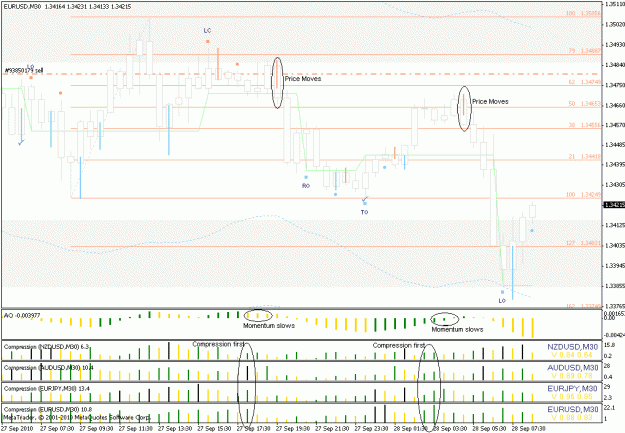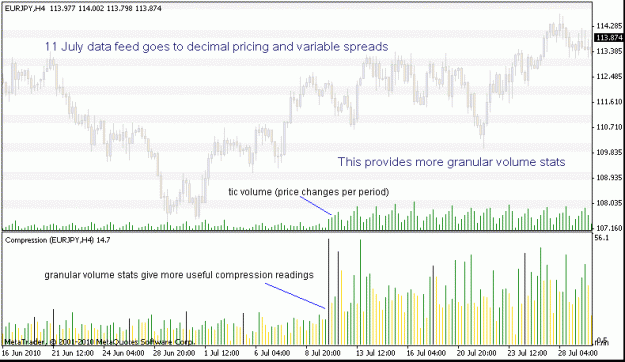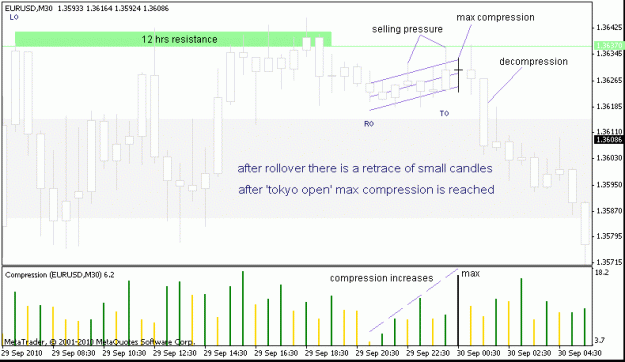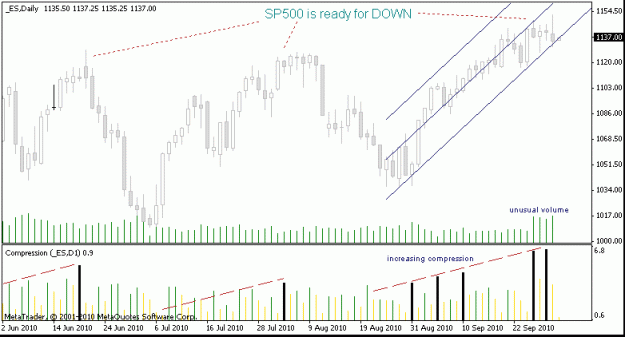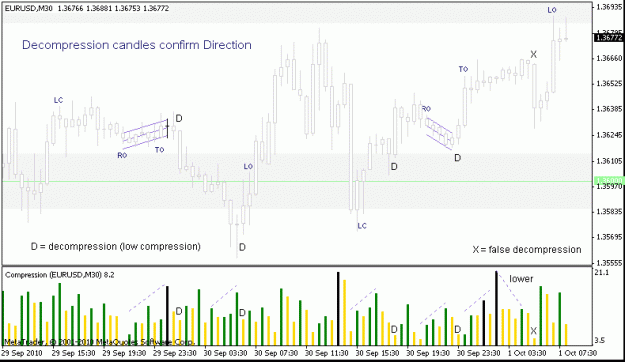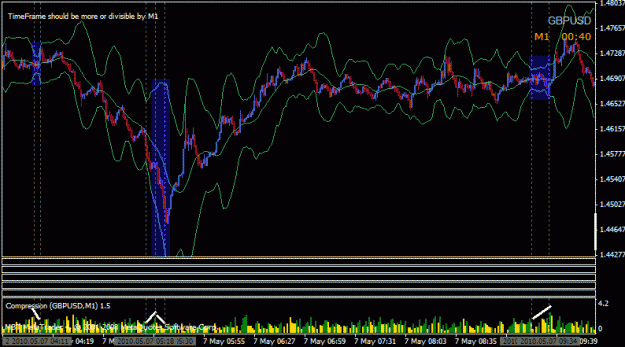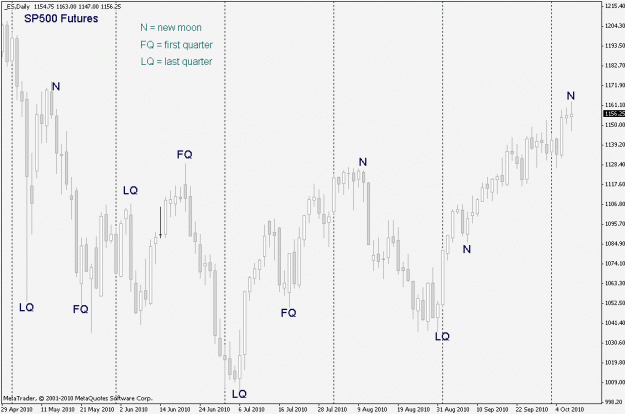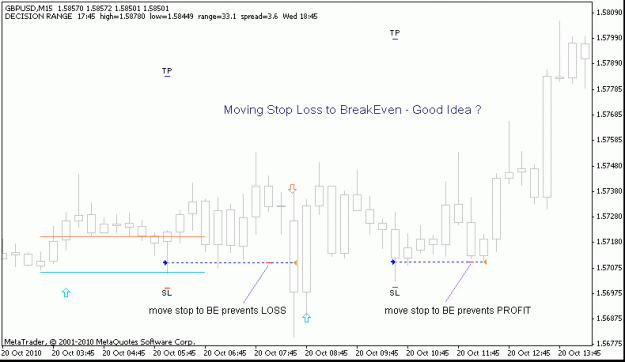- Investigate compression as a hidden dimension of market behaviour.
- Price is visible at all times, compression is not visible.
- It is found using (Compression = Volume / Price Range).
Is compression increasing or decreasing ?
What effect does compression have on price ?
Anyone here familiar with Ohm's Law that describes electrical circuits ?
Current(amps) = Voltage(volts) / Resistance(ohms)
What happens to current if the voltage is going up and down ?
I was studying Ohms law when I was about 11 years old for my ham radio licence and experimenting with all kinds of circuits in my workshop with power supplies, meters, varistors and all that stuff, so I have a crystal clear intuitive 'feel' for electrical circuits. (zzaaappp Yoww!)
- Can the metaphor of Ohms law be applied to markets?
- What are the relationships between time, volume, order flow, price movement, and resistance to price movement ?
- What comes first volume changes, price changes, or something else ?
- How much 'pressure' or 'voltage' is required to move the price in a new direction and how long does it take to apply that pressure ?
Fact: Lots of orders not moving price must be encountering opposition.
Is this (like) a high voltage and high resistance circuit with low current?
Fact: Lots of orders moving price a lot must not be encountering opposition.
Is this (like) a high voltage and low resistance circuit with high current?
References:
Compression as an Idea to Describe Market Activity
Trading Chaos by Bill Williams
Structure of Forex by Darkstar
Indicators:
Compression.mq4 latest version in Post #15
